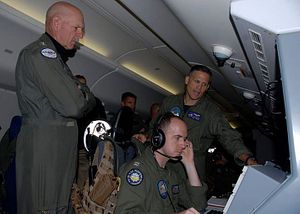The new U.S. commander of the Pacific Fleet participated in a surveillance flight over the disputed South China Sea in an American spy plane as part of his inaugural trip to the Asia-Pacific.
Admiral Scott Swift, who assumed command of the Fleet in May, joined a seven-hour maritime surveillance mission on board a P-8A Poseidon plane this weekend. According to the U.S. Pacific Command, he took part “to witness firsthand the full range of the Poseidon’s capabilities.”
The P-8A Poseidon is designed for intelligence, surveillance, reconnaissance missions as well as long-range anti-submarine warfare and anti-surface warfare. It is capable of broad-area maritime and littoral operations, and can fly as high as 41,000 feet and travel up to 490 knots.
Swift’s participation in the operation is part of a firmer U.S. public campaign over the past few months to demonstrate that Chinese activities in the South China Sea will not undermine freedom of navigation and overflight (See: “The Case for a Bolder US South China Sea Policy”). As U.S. Secretary of Defense Ash Carter put it in a speech addressing the South China Sea in Hawaii on May 27, “The United States will fly, sail and operate wherever international law allows, as we do all around the world.”
In May, a U.S. Navy P-8 flew over the disputed area where China had been building artificial islands and was warned to leave repeatedly by Chinese radio callers. The U.S. Navy has also considered sailing ships within 12 miles of one of China’s reclaimed features to show that Washington does not recognize that they generate a 12-mile territorial sea (See: “How Would the US Challenge China in the South China Sea?”).
Vice Admiral Alexander Lopez, the chief of the Philippine Armed Forces Western Command, said that the mission was good for the Philippines as it was a way for it to monitor what China was doing in its own backyard. He said there was nothing wrong with such routine patrols as they were conducted within international airspace and over international waters.
“Only the Chinese claim that these areas are theirs,” Lopez added.
Swift took part in the surveillance mission on Saturday after a trip to the Philippines. His visit also covers Southeast Asia and Japan before his return to Hawaii.

































